37TH CANADIAN CONFERENCE ON ELECTRICAL AND COMPUTER ENGINEERING- TUTORIALS
Tutorial 1: Generative AI for Energy: Basics and Applications
Time: (10:00-12:00Noon)
Contributors: Dr Di Wu (Mcgill University, Canada), Arnaud Zinflou (Hydro Quebec) , and Dr Benoit Boulet (Mcgill University, Canada)
Abstract In recent years, with the wide deployment of smart meters, applying advanced machine learning methods for power grids has become applicable. Accurate load forecasting is of critical importance and can be used to assist in efficient energy generation scheduling, real-time energy dispatching, and grid infrastructure upgrading. On the other hand, with the wide deployment of different kinds of electrical appliances and renewable energy generation, more and more challenges have also been introduced in power grids. Thus, more attention is being paid to detecting abnormal behaviours in modern power grids. Efficient anomaly detection can help significantly improve grid networks’ operational effectiveness and dependability. Deep learning has shown impressive performance for load forecasting tasks and anomaly detection tasks. However, the limited amount of available data has significantly restricted the applicability of these models. On the other hand, Generative AI, such as generative adversarial networks (GAN), Diffusion Models, and Large Language Models, have achieved a lot of success. In this tutorial, we aim to: 1) introduce the overview as well as the basics of Generative AI, including different types of classic generative models, such as GAN, VAE, energy-based models, and flow-based models; 2) introduce some recently impactful large language models, such as Bert family, GPT family, Llama family, and Gemini 3) introduce classic time series problems and related industrial applications, 4) introduce a few case studies to showcase how we can use Generative AI for real-world time series problems and potential usages for other problems in the energy sector, 5) general discussions on potential interesting research directions.
Presenters:
 Di Wu (McGill Univesity) Di Wu is currently a senior staff research scientist at Samsung AI center Montreal and an Adjunct Professor at McGill University. Before joining Samsung, he did postdoctoral research at Montreal MILA and Stanford University. He received the Ph.D. degree from McGill University, Montreal, Canada, in 2018 and the MSc degree from Peking University, Beijing, China, in 2013. Di’s research interests mainly lie in designing algorithms (e.g., Reinforcement learning, operation research) for sequential decision-making problems and data-efficient machine learning algorithms (e.g., Transfer Learning, Meta-Learning, and Multitask Learning). He is also interested in leveraging such algorithms for applications in real-world systems (e.g., Communications Systems, Smart Grid, and Intelligent Transportation Systems). Di has published more than 100 papers and hold more than 20 US patents.
Di Wu (McGill Univesity) Di Wu is currently a senior staff research scientist at Samsung AI center Montreal and an Adjunct Professor at McGill University. Before joining Samsung, he did postdoctoral research at Montreal MILA and Stanford University. He received the Ph.D. degree from McGill University, Montreal, Canada, in 2018 and the MSc degree from Peking University, Beijing, China, in 2013. Di’s research interests mainly lie in designing algorithms (e.g., Reinforcement learning, operation research) for sequential decision-making problems and data-efficient machine learning algorithms (e.g., Transfer Learning, Meta-Learning, and Multitask Learning). He is also interested in leveraging such algorithms for applications in real-world systems (e.g., Communications Systems, Smart Grid, and Intelligent Transportation Systems). Di has published more than 100 papers and hold more than 20 US patents.
 Arnaud Zinflou (Hydro Quebec) Arnaud Zinflou has an extensive history working with AI projects in the fields of industrial manufacturing, logistics, finance, and online retail. He holds both a Bachelor and Master of Computer Science, as well as a Ph.D. in Computer Engineering. He currently principal research scientist at Hydro-Québec research institute and leads projects in many areas of machine learning such as computer vision, time series forecasting or representation learning. He is also the author and coauthor of more than 40 papers, 7 book chapters and 3 patents. He has been an IEEE senior member since 2015.
Arnaud Zinflou (Hydro Quebec) Arnaud Zinflou has an extensive history working with AI projects in the fields of industrial manufacturing, logistics, finance, and online retail. He holds both a Bachelor and Master of Computer Science, as well as a Ph.D. in Computer Engineering. He currently principal research scientist at Hydro-Québec research institute and leads projects in many areas of machine learning such as computer vision, time series forecasting or representation learning. He is also the author and coauthor of more than 40 papers, 7 book chapters and 3 patents. He has been an IEEE senior member since 2015.
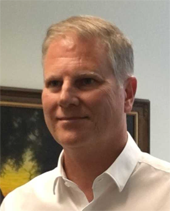 Benoit Boulet (McGill Univesity) Benoit Boulet, P.Eng., Ph.D., is Professor in the Department of Electrical and Computer Engineering at McGill University which he joined in 1998, and Director of the McGill Engine, a Technological Innovation and Entrepreneurship Centre. He is Associate Vice-Principal of McGill Innovation and Partnerships and was Associate Dean (Research & Innovation) of the Faculty of Engineering from 2014 to 2020. Professor Boulet obtained a Bachelor’s degree in applied sciences from Université Laval in 1990, a Master of Engineering degree from McGill University in 1992, and a Ph.D. degree from the University of Toronto in 1996, all in electrical engineering. He is a former Director and current member of the McGill Centre for Intelligent Machines where he heads the Intelligent Automation Laboratory. His research areas include the design and data-driven control of electric vehicles and renewable energy systems, machine learning applied to biomedical systems, and robust industrial control.
Benoit Boulet (McGill Univesity) Benoit Boulet, P.Eng., Ph.D., is Professor in the Department of Electrical and Computer Engineering at McGill University which he joined in 1998, and Director of the McGill Engine, a Technological Innovation and Entrepreneurship Centre. He is Associate Vice-Principal of McGill Innovation and Partnerships and was Associate Dean (Research & Innovation) of the Faculty of Engineering from 2014 to 2020. Professor Boulet obtained a Bachelor’s degree in applied sciences from Université Laval in 1990, a Master of Engineering degree from McGill University in 1992, and a Ph.D. degree from the University of Toronto in 1996, all in electrical engineering. He is a former Director and current member of the McGill Centre for Intelligent Machines where he heads the Intelligent Automation Laboratory. His research areas include the design and data-driven control of electric vehicles and renewable energy systems, machine learning applied to biomedical systems, and robust industrial control.
Tutorial 2: When SDN Meets Blockchain to Enable Inter-Operator Networks
Contributor: Prof. Souihi Sami, University of Paris Est Créteil, France.
Topic: Software-Defined Networking (SDN) and Blockchain.
Time: (10:00-12:00Noon)
Abstract- Software-Defined Networking (SDN) was developed to address the shortcomings of traditional network architectures. It allows system administrators to easily manage and configure the network by separating and abstracting the control plane from the data plane. All the knowledge and intelligence of SDN is concentrated in a software entity called the SDN controller, making the network programmable. However, an SDN architecture is hardly transposable to an inter-operators network. In this context, the development of Blockchain allows to think about the evolution of the SDN architecture in order to propose applications going beyond a single operator’s network. In this tutorial, we propose to introduce the participants to these two technologies and to create a simplified example to concretize the presented concepts.
 Sami Souihi is an Associate Professor of Computer Science at the Networks and Telecommunications (N&T) Department of Paris-Est Créteil University (ex. Paris 12 University), and the LiSSi Laboratory, France. He received my MSc degree from the University of Paris 6, France in 2010, and His PhD degree from the University of Paris-Est (UPE) in 2013. In 2023, He obtained the Habilitation to Direct Research (HDR – Habilitation à Diriger les Recherches is the highest university degree in France). His research work focuses on adaptive mechanisms in large-scale dynamic systems. These mechanisms are based on context-enhanced knowledge, Machine Learning (ML), Network Functions Virtualization (NFV) and also on SoftwareDefined Networking (SDN). For several years now, Sami has been teaching networks and more particularly the so-called intelligent networks. These teachings cover both the theoretical and practical aspects. In addition, Sami has led and participated in several collaborative research projects implementing concepts used in this tutorial.
Sami Souihi is an Associate Professor of Computer Science at the Networks and Telecommunications (N&T) Department of Paris-Est Créteil University (ex. Paris 12 University), and the LiSSi Laboratory, France. He received my MSc degree from the University of Paris 6, France in 2010, and His PhD degree from the University of Paris-Est (UPE) in 2013. In 2023, He obtained the Habilitation to Direct Research (HDR – Habilitation à Diriger les Recherches is the highest university degree in France). His research work focuses on adaptive mechanisms in large-scale dynamic systems. These mechanisms are based on context-enhanced knowledge, Machine Learning (ML), Network Functions Virtualization (NFV) and also on SoftwareDefined Networking (SDN). For several years now, Sami has been teaching networks and more particularly the so-called intelligent networks. These teachings cover both the theoretical and practical aspects. In addition, Sami has led and participated in several collaborative research projects implementing concepts used in this tutorial.
Tutorial 3: co-Packaged Si Photonics; Opportunities and Challenges
Time: (1:00PM-3:00PM)
Abstract: As the industry places increasing emphasis on co-packaged optics as a strategic direction, understanding the intricacies of Si photonics becomes pivotal, as its capabilities and functionalities wield a significant influence over the advantages that co-packaged optics can bring to the broader CMOS ecosystem. As such the tools, technologies and approaches which enable co-packaged optics will be overviewed in this course. A thorough exploration of the remarkable potential of Silicon (Si) photonics in driving and supporting the ongoing co-packaged optics initiatives within the current industry landscape.
 Amr S. Helmy is a Professor in the department of electrical and computer engineering at the University of Toronto. Prior to his academic career, Amr held a position at Agilent Technologies – UK, between 2000 and 2004. He received his Ph.D. and M.Sc. from the University of Glasgow with a focus on photonic integration technologies, in 1999 and 1995 respectively. His research interests include photonic device physics, with emphasis on plasmonic nanostructures, nonlinear and quantum photonics addressing applications in information processing / sensing, and data communications. Amr is an active volunteer and leader of the IEEE Photonics Society, currently serving as an Elected Member of the Society’s Board of Governors and as a Distinguished Lecturer. He was also the recipient of the Society’s 2019 Distinguished Service Award.
Amr S. Helmy is a Professor in the department of electrical and computer engineering at the University of Toronto. Prior to his academic career, Amr held a position at Agilent Technologies – UK, between 2000 and 2004. He received his Ph.D. and M.Sc. from the University of Glasgow with a focus on photonic integration technologies, in 1999 and 1995 respectively. His research interests include photonic device physics, with emphasis on plasmonic nanostructures, nonlinear and quantum photonics addressing applications in information processing / sensing, and data communications. Amr is an active volunteer and leader of the IEEE Photonics Society, currently serving as an Elected Member of the Society’s Board of Governors and as a Distinguished Lecturer. He was also the recipient of the Society’s 2019 Distinguished Service Award.
Tutorial 4: Smart Healthcare Systems by Using Secure Data Communication, AI Data Generative and Regulation and Compliance Standards
Time: (1:00PM-3:00PM)
Abstract- Traditional healthcare systems have suffered from different data communication, security, data processing, and compliance issues. The traditional systems are also not well equipped to handle the new technologies like Artificial Intelligence (AI) by enabling more accurate diagnostics, personalized treatment plans, and improved patient outcomes. The existing data communication and security protocols and compliance are also not fully implemented to tackle the system’s challenges. The traditional medical sciences have changed into more smart and intelligent healthcare systems for medical diagnostic, and service provision. The demand for new medical and healthcare facilities has been increasing globally due to population growth due to so many mortal pandemic viruses and diseases. To fulfill medical demand, new technologies have been tested for better diagnosis, decision-making, and disease prevention. As observed, the new technologies have changed the traditional healthcare systems into more smart networks like the Internet of Medical Things (IoMT), and Wireless Body Sensor Area Networks (WBAN). These networks are interconnected and emerge with new sensor-based technologies, cloud computing, deep and machine learning, augmented and virtual reality for medical and healthcare sciences for monitoring and diagnosis. In this tutorial, a Tri-Tier architecture is presented by using secure data communication, AI data generative, and regulation and compliance tiers. The data communication tier is based on advanced sensing and monitoring technologies like cloud and edge-based systems integrated with security detection mechanisms. The edge and cloud layer provides the all functions of the perception layer like smart sensing, visual sensing, and monitoring services, and can control the device’s perception and behavior. The second tier provides the AI data generative functionalities to handle real-time synthetic medical images for predictive analytics to enhance patient care. This tier also automates routine tasks, such as administrative work and data analysis, which can free up healthcare professionals to focus on more complex tasks. The last regulation and compliance tier is responsible for handling the standards and compliance for healthcare systems.
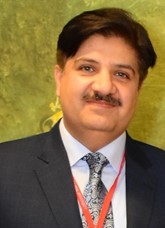 Kashif Naseer Qureshi is an Associate Professor of Cyber Security in the Department of Electronic and Computer Engineering at the University of Limerick, Ireland. He is also actively involved in the Cyber Skills project, a HEA-HCI Pillar 3 initiative in Ireland. He received a Ph.D. degree from the University of Technology Malaysia (UTM) and holds two master’s degrees in Computer Science and Information Technology from reputable universities. He is the Co-Principal Investigator in the Cyber Reconnaissance and Combat project funded by the higher education commission. His research interests focus on the security, trust, and privacy concerns for smart healthcare systems, Internet of Everything (IoE), Internet of Vehicles (IoV), Electronic Vehicles (EV) charging management planning and recommendation systems, and Internet of Things (IoT) and use cases implementation in wireless and wired networks. He is an active member of Lero, the Science Foundation Ireland Research Centre for Software at the University of Limerick (UL). His name has been included in the top 2% of Scientists for consecutive 3 years from Stanford University USA. He has published various high-impact factor papers in international journals and conference proceedings and served on several conferences IPCs and journal editorial boards. He has several book chapters and 5 edited books in Springer, CRC, and Elsevier Publishers related to Cybersecurity, Privacy, and Trust architectures. He has also been part of various research projects related to wireless communication, routing, and Cybersecurity domains in the UK, China, Ireland, Malaysia, Canada, Dubai, Vietnam, and Pakistan.
Kashif Naseer Qureshi is an Associate Professor of Cyber Security in the Department of Electronic and Computer Engineering at the University of Limerick, Ireland. He is also actively involved in the Cyber Skills project, a HEA-HCI Pillar 3 initiative in Ireland. He received a Ph.D. degree from the University of Technology Malaysia (UTM) and holds two master’s degrees in Computer Science and Information Technology from reputable universities. He is the Co-Principal Investigator in the Cyber Reconnaissance and Combat project funded by the higher education commission. His research interests focus on the security, trust, and privacy concerns for smart healthcare systems, Internet of Everything (IoE), Internet of Vehicles (IoV), Electronic Vehicles (EV) charging management planning and recommendation systems, and Internet of Things (IoT) and use cases implementation in wireless and wired networks. He is an active member of Lero, the Science Foundation Ireland Research Centre for Software at the University of Limerick (UL). His name has been included in the top 2% of Scientists for consecutive 3 years from Stanford University USA. He has published various high-impact factor papers in international journals and conference proceedings and served on several conferences IPCs and journal editorial boards. He has several book chapters and 5 edited books in Springer, CRC, and Elsevier Publishers related to Cybersecurity, Privacy, and Trust architectures. He has also been part of various research projects related to wireless communication, routing, and Cybersecurity domains in the UK, China, Ireland, Malaysia, Canada, Dubai, Vietnam, and Pakistan.
Tutorial 5: Quantum Computing Era: Opportunities, Challenges, & Future Prospects
Time: (3:30PM-5:30PM)
TUTORIAL ORGANIZERS
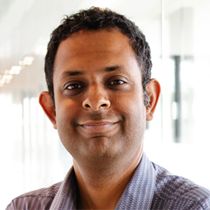 Organizer: Dr. Salimur Choudhury
Organizer: Dr. Salimur Choudhury
Affiliation: Associate Professor, School of Computing, Queen’s University, Kingston, ON, Canada
Dr. Salimur Choudhury leads the GOAL (Global Optimization, Analytics, and Learning) Research Group. He joined Queen’s University in January 2023. His primary research interest is designing algorithms (including Quantum Algorithms) for optimization problems. Manuscripts based on his research work have been published in several top-tier conferences and journals. He has received several research grants from government agencies (NSERC-DG, NSERC Alliance, MITACS Accelerate, NOHFC, NOAMA, NRCan, etc.), not-for-profit, and private industries (a few of them are based in Kingston, ON). Several solutions proposed by his research group have already been adopted by industries. Dr. Choudhury is the recipient of the Lakehead University Research Excellence Award (2021) for his research and scholarly contributions in the area of combinatorial optimization.
 Organizer: Mahzabeen Emu
Organizer: Mahzabeen Emu
Affiliation: PhD Candidate and NSERC Vanier Scholar, School of Computing, Queen’s University, Kingston, ON, Canada
Mahzabeen Emu is pursuing her PhD in the School of Computing at Queen’s University in Kingston, Ontario, Canada, and a Governor General Gold Medal Recipient. Her research focuses on quantum computing and its applications, particularly in the areas of quantum algorithms and quantum machine learning for communication and optimization. Mahzabeen was awarded the Vanier Canada Government Scholarship for her project titled “Optimizing Beyond 5G Communication with Quantum Computing and Artificial Intelligence”. Her research work on preventing burnout among healthcare workers battling COVID-19 and improving healthcare scheduling received significant media coverage and attention. She received a M.Sc. degree in Computer Science with an AI Specialization from Lakehead University. She is the recipient of the Vector Institute AI Scholarship (2019), OGS 2020-23, Mitacs Accelerate, and Mitacs Business Intelligence grant, and multiple dean’s scholar awards.
TUTORIAL SPEAKERS/INSTRUCTORS
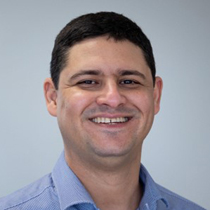 Instructor: Dr. Udson Mendes
Instructor: Dr. Udson Mendes
Affiliation: Team Leader, Quantum Computing, CMC Microsystems, Sherbrooke, Quebec, Canada
Udson Mendes serves as Team Leader, Quantum Technologies, at CMC Microsystems. After completing his Ph.D. in Physics at the University of Campinas in Brazil, Udson started a postdoctoral fellowship at the Laboratoire Pierre Aigrain at the École Normale Supérieure de Paris (2014 – 2016), then became a Prize postdoctoral fellow at the Institut Quantique at the Université de Sherbrooke (2016-2019). In 2021, Udson joined CMC to leverage his expertise to develop quantum technologies applications and services to benefit the Canadian quantum ecosystem. Currently, he manages CMC’s quantum technologies activities ranging from the development of quantum algorithm solutions to quantum hardware fabrication services to training of highly qualified personnel. Udson’s research has been focusing on the development of quantum technologies ranging from quantum hardware (superconducting qubits, spin qubits, microwave amplifiers) to quantum algorithms. His findings were published in prestigious journals such as Nature and Science.
 Instructor: Dr. Taufiq Rahman
Instructor: Dr. Taufiq Rahman
Affiliation: Team Lead, Connected & Automated Vehicles, National Research Council Canada, London, ON, Canada
Taufiq Rahman leads the research activities for the Connected & Autonomous Vehicle (CAV) Team of the National Research Council Canada (NRC), the largest research organization of the Government of Canada. His previous experience involves perception and autonomous systems-related engineering research & development for several organizations, including Rolls-Royce Marine Ltd, Boeing Phantom Works, and Agile Sensor Technologies. He holds a master’s and PhD degree in engineering from Memorial University of Newfoundland, specializing in mechatronic system design, robotics, and machine vision. In his current role at NRC, he is focusing on many research topics involving transportation automation systems, such as multi-modal sensor fusion, robust perception systems, SLAM systems, C-V2X application development, driver intentionality prediction, and transportation infrastructure monitoring for the railway industry. He holds adjunct faculty status at the University of Western Ontario & the Ontario Technical University. He has been awarded more than two million dollars in external & internal funding for his portfolio of current and recently completed projects.
 Instructor: Dr. Koray Karabina
Instructor: Dr. Koray Karabina
Affiliation: Team Lead of the Cryptography and Quantum Computing Team at the National Research Council (NRC) of Canada and Adjunct Associate Professor at the University of Waterloo, ON, Canada
Koray Karabina leads the Cryptography and Quantum Computing Team at the National Research Council of Canada, and he is appointed as an adjunct associate professor at the University of Waterloo. Koray Karabina’s research focuses on the design, implementation, and cryptanalysis of cryptographic algorithms and protocols. He is particularly interested in post-quantum cryptography, secure biometrics, and the interplay between machine learning and cryptography.
 Instructor: Dr. Sayonee Ray
Instructor: Dr. Sayonee Ray
Affiliation: Staff Quantum Applications and Solutions Scientist at IonQ
Sayonee Ray serves as a Staff Scientist at IonQ, a leading company in the field of quantum computing. She is an application scientist working in the interface of machine learning, quantum computing, and physics. Before joining IonQ, Sayonee worked at 1QBit and the University of Waterloo as a Researcher, specializing in algorithms and experiments for quantum simulations and generative machine learning models. Sayonee’s earlier experience includes being a Postdoctoral Research Fellow at The University of New Mexico from 2017 to 2020, where she focused on developing approximation schemes for numerical simulation of complex quantum systems and also held various organizational roles for conferences and seminars in the US. Her expertise is in numerical modeling and scientific computation, using Python, Julia, and MATLAB. Her research areas include quantum computing, machine learning and applications of quantum algorithms.
Tutorial 6: A Wireless, Biomedical Sensing Platform for the Internet of Things (IoT): Training Case Study.
Time: (3:30PM-5:30PM)
Abstract: In this case study, CMC and its collaborators will demonstrate a small, wireless electrochemical sensing platform and how it can integrate a variety of novel sensor technologies for biomedical applications. This tutorial is intended for researchers developing customized sensors for medical monitoring/diagnostics, smart agriculture, food safety/security, or environmental monitoring, or collaborating with application domain or sensing experts to integrate custom sensors into an embedded platform.
This tutorial will address the following topics:
- Development of novel biosensors
- Field-effect transistor-based biosensors
- Electrochemical aptamer-based biosensors
- Development and demonstration of a wireless IoT sensing platform
- How to integrate biosensors to the IoT platform
The objectives of the tutorial include:
- Presenting a real-world use case of a small, wireless, electrochemical-sensing platform, including the research problem, application, and key functional and non-functional requirements
- Introducing biosensing technologies and techniques
- Describing the development process:
- HW/SW development environments
- Design experiences, optimization techniques, lessons learned
- The resulting platform, platform operation, and research project results
- Describing how to obtain the platform and modify it for specific needs
- Presenting a platform feature roadmap and soliciting input from participants
 Nicolas Fontaine, PhD, is a postdoctoral fellow in the research group of Philippe Dauphin Ducharme in the Department of Chemistry at Université de Sherbrooke. After completing a BSc in chemistry with honors in 2017, he received his PhD in 2022 from Université Laval for his thesis on the development of highly luminescent nanosensors for the detection of metabolites of the gut microbiota. He then moved to Sherbrooke to begin training in electrochemistry. His research focus on the topics of nanomaterials, optical and electrochemical sensors. Nicolas’ research is currently supported by FRQNT and aims to enhance the analytical performances of electrochemical aptamer-based biosensors to facilitate their deployment in real-life applications.
Nicolas Fontaine, PhD, is a postdoctoral fellow in the research group of Philippe Dauphin Ducharme in the Department of Chemistry at Université de Sherbrooke. After completing a BSc in chemistry with honors in 2017, he received his PhD in 2022 from Université Laval for his thesis on the development of highly luminescent nanosensors for the detection of metabolites of the gut microbiota. He then moved to Sherbrooke to begin training in electrochemistry. His research focus on the topics of nanomaterials, optical and electrochemical sensors. Nicolas’ research is currently supported by FRQNT and aims to enhance the analytical performances of electrochemical aptamer-based biosensors to facilitate their deployment in real-life applications.
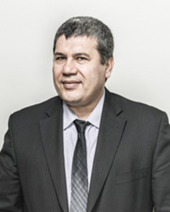 Professor Ebrahim Ghafar-Zadeh, York University, received his B.Sc., M.Sc. and Ph.D. degrees all in electrical engineering from KNT University of Technology, University of Tehran, and Polytechnique of Montreal (Montreal, Canada) respectively. Then, he continued his research as a postdoc fellow in the departments of electrical engineering, at McGill University, and bioengineering at the University of California at Berkeley. In 2013, he joined as an Assistant Professor with the Department of Electrical Engineering and Computer Science (EECS), Lassonde School of Engineering, York University, where he is currently an Associate Professor, a member of Graduate Programs of Departments of EECS and Biology, and the Director of the Biologically Inspired Sensors and Actuators (BioSA) Research Laboratory. His research is aimed at exploring novel integrated sensors and actuators for life science applications. Since 2013, the research of Prof. Ghafar-Zadeh has been supported by various funding agencies including NSERC, CIHR, SSHRC and he has published more than 1500 journals and conference papers and trained more than 40 highly qualified personnel (HQP) in the fields of electrical engineering and biology. He is a Licensed Professional Engineer in Ontario and a Senior Member of IEEE.
Professor Ebrahim Ghafar-Zadeh, York University, received his B.Sc., M.Sc. and Ph.D. degrees all in electrical engineering from KNT University of Technology, University of Tehran, and Polytechnique of Montreal (Montreal, Canada) respectively. Then, he continued his research as a postdoc fellow in the departments of electrical engineering, at McGill University, and bioengineering at the University of California at Berkeley. In 2013, he joined as an Assistant Professor with the Department of Electrical Engineering and Computer Science (EECS), Lassonde School of Engineering, York University, where he is currently an Associate Professor, a member of Graduate Programs of Departments of EECS and Biology, and the Director of the Biologically Inspired Sensors and Actuators (BioSA) Research Laboratory. His research is aimed at exploring novel integrated sensors and actuators for life science applications. Since 2013, the research of Prof. Ghafar-Zadeh has been supported by various funding agencies including NSERC, CIHR, SSHRC and he has published more than 1500 journals and conference papers and trained more than 40 highly qualified personnel (HQP) in the fields of electrical engineering and biology. He is a Licensed Professional Engineer in Ontario and a Senior Member of IEEE.
 James Millar, Technical Staff – Embedded Systems Design, has been with CMC Microsystems for 20 years. He is currently responsible for IoT systems hardware design and the Equipment Rental Program. Previous CMC experience includes supporting researcher laboratories, procurement of scientific hardware, and supporting FPGA researchers. Additional work experience includes college instruction in electronics (St. Lawrence College), and network design and technical marketing (Nortel). He is currently engaged in a collaboration with a Quebec university involving IoT design, which from time to time allows him to practice his French language skills. He has a Master of Science (Electrical Engineering) from University of Manitoba and Bachelor’s degrees in Engineering Science (Electrical Engineering) and Science (Computer Science) from Western University.
James Millar, Technical Staff – Embedded Systems Design, has been with CMC Microsystems for 20 years. He is currently responsible for IoT systems hardware design and the Equipment Rental Program. Previous CMC experience includes supporting researcher laboratories, procurement of scientific hardware, and supporting FPGA researchers. Additional work experience includes college instruction in electronics (St. Lawrence College), and network design and technical marketing (Nortel). He is currently engaged in a collaboration with a Quebec university involving IoT design, which from time to time allows him to practice his French language skills. He has a Master of Science (Electrical Engineering) from University of Manitoba and Bachelor’s degrees in Engineering Science (Electrical Engineering) and Science (Computer Science) from Western University.
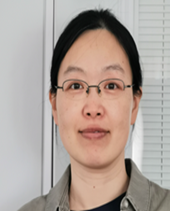 Olive Zhao, Technical Staff – Embedded Systems Design, joined CMC in 2001. She has been working on embedded systems design focusing on embedded software development, mainly with ARM and RISC-V architectures. Her experience with CMC includes embedded application development, device driver development, embedded Linux and RTOS porting, BSP development, FPGA prototyping, and CAD tools support. She is currently involved in a collaborative project with a Canadian university on developing an IoT application in the biomedical field. Olive has a Master’s degree in Electrical and Computer Engineering from Queen’s University and a Bachelor’s degree in Computer Science from Shandong University, China.
Olive Zhao, Technical Staff – Embedded Systems Design, joined CMC in 2001. She has been working on embedded systems design focusing on embedded software development, mainly with ARM and RISC-V architectures. Her experience with CMC includes embedded application development, device driver development, embedded Linux and RTOS porting, BSP development, FPGA prototyping, and CAD tools support. She is currently involved in a collaborative project with a Canadian university on developing an IoT application in the biomedical field. Olive has a Master’s degree in Electrical and Computer Engineering from Queen’s University and a Bachelor’s degree in Computer Science from Shandong University, China.
| (10:00AM -12:00Noon) | Generative AI for Energy: Basics and Applications | When SDN Meets Blockchain to Enable Inter-Operator Networks |
| (01:00PM-03:00PM) | co-Packaged Si Photonics; Opportunities and Challenges | A Smart Healthcare Systems by Using Secure Data Communication, AI Data Generative and Regulation and Compliance Standards |
| (3:30PM-5:30PM) | Quantum Computing Era: Opportunities, Challenges, & Future Prospects | A Wireless, Biomedical Sensing Platform for the Internet of Things (IoT): Training Case Study |

